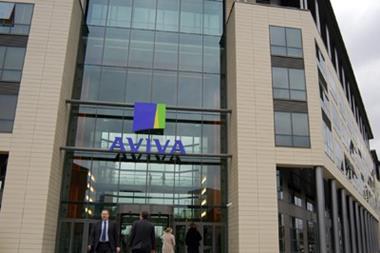Opting to create a syndicate in a box could add another string to the insurer’s bow
The talk in the London market remains that Aviva is looking to establish a Lloyd’s syndicate, but there has been a cold silence on the issue from the company itself.
In November 2021, Insurance Times reported that Aviva would be looking to enter One Lime Street with a new underwriting operation, although at the time of writing, the details around the possible syndicate and its appetite are sparse.
Aviva so far has gone out of its way to keep its cards close to its chest. A request for confirmation on the syndicate plans led to a brief statement from a company spokesperson.
“We keep all elements of our strategy under active review, which always includes considering those products and distribution channels we are not currently in,” the insurer said. This is the mantra the company has adhered to since news broke of the plans.
Syndicate in a box model

For the insurance market, the questions are why Aviva would look to form a syndicate and also how it would operate.
Up until 18 months ago, if an underwriter wanted to open a syndicate at Lloyd’s, their options were limited and clear. The syndicate structure was based on a tried and tested model – however, times have changed.
Under the market’s Future at Lloyd’s strategy, which was updated with Blueprint Two in November 2020, the option of a new syndicate in a box (SIAB) was created. The SIAB scheme was initially introduced to the insurance market as part of Blueprint One in 2019.
When the SIAB system was launched, Lloyd’s chief executive John Neal said it was designed to enable new and diverse capital to enter the market quickly.
However, the SIAB model comes with a number of limitations. The first is that a SIAB has a cap in terms of the level of premium which can be written through the platform - it cannot exceed £100m. Plus, a SIAB does not come with the right to have a physical box at Lloyd’s.
This is in stark contrast to an application for a conventional syndicate, where the premium limit is likely to be a minimum of £100m.
SIABs also have to adhere to a lower cost base, with a maximum expense ratio target of 35%. Despite this upper limit, Lloyd’s expects the cost of operation for SIABs to be far lower than this.
Furthermore, SIABs are restricted to bringing only new business into the market, meaning they cannot compete with established syndicates for business that is already coming into Lloyd’s.
What is a syndicate in a box?
According to Lloyd’s of London, a syndicate in a box offers “a new way of bringing innovative new syndicates into the market and giving them the best chance of success”. It does this by:
- Adjusting the participation and entry criteria to make it easier and more capital efficient for smaller entrepreneurial businesses to enter and trade at Lloyd’s for their first three years.
- Creating an environment that facilitates testing and learning, with fast success or failure.
- Balancing quicker, more transparent entry processes and proportionate capital requirements with constraints that limit the potential downside for the market.
- Providing instant access to the Lloyd’s ecosystem, which can give smaller underwriting teams the infrastructure and services they need to operate efficiently.
- Applying the same regulatory responsibilities and minimum standards as for other Lloyd’s syndicates.
- Ensuring each syndicate in a box operates to the same standard of performance management and oversight as for conventional syndicates.
Advantages for Aviva
The move to create a SIAB could be attractive to Aviva on several levels.
The premium limit would allow the insurer to underwrite on a far more conservative basis compared to the huge commitment required from a conventional syndicate. It would also negate the expense of establishing a box at Lloyd’s.
Aviva and its chief executive Amanda Blanc have made no secret of the fact they are keen to be at the forefront of the industry’s efforts to help deliver the transition to net zero – for example, in March 2021, the insurer announced its intention to become a net zero carbon emissions organisation by 2040.
The creation of a SIAB, therefore, would enable the underwriter to offer a suite of products focused around environmental, social and governance (ESG) factors, climate risks and the efforts to create sustainable energy solutions.
A SIAB could also allow Aviva to tap into Lloyd’s global underwriting licences, should it want to look to international markets.
Munich Re and AIG are among the insurers that have established a SIAB. Munich Re was the first firm to launch a SIAB, which started underwriting on 1 January 2020.
Munich Re, which described its SIAB as a platform for innovation, uses the box to underwrite green energy solutions and autonomous vehicles, as well as provide parametric covers for extreme weather risks.
Commenting on Aviva’s potential plans, one London market broker told Insurance Times: “If Aviva wants to access Lloyd’s, it makes sense for it to be via a syndicate in a box.
“Given the reorganisation [the insurer is] undergoing, it is unlikely [the business] will want to commit to a conventional syndicate and the level of investment it would require.
“[Aviva] may well be looking at new and innovative markets and there is also the speed with which the syndicate in a box operation can be established.”














































No comments yet